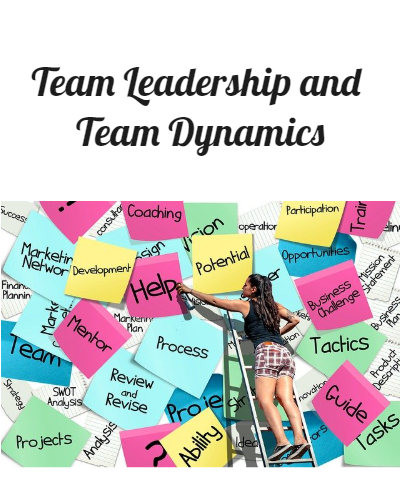Team Leadership and Team Dynamics
The role of a leader cannot be undermined when it comes to setting up the direction of a team and it plays a focal role in the organization’s success to achieve its goals effectively. When we look at the literature, we realize that most of the literature is focused on the common features of leadership and how it affects and influences the organization but few works of literature focus on leadership and team dynamics.
There are some approaches and theories when it comes to leadership and team dynamics. There is a theory known as the path-goal theory in which a leader influences the organization in achieving its goals by setting goals for and with the subordinates. So, the involvement of the leader with individual members to set expectations is barely minimum. There are other models which emphasize leadership progression as a key driver for the success of the team.
The general practice as to who will lead in a team depends on the seniority of individuals and their qualifications. Well-qualified people or senior people are often preferred over others and are appointed to lead the team. There are some cases in which this traditional criterion is not followed while appointing a leader. Several staff members are identified as team leaders although they fall behind in the seniority order. Research has been done to get an insight into such personalities. It is noted that being vocal and actively participating in team meetings and discussions at an early stage is a strong predictor of a team leader. Such that, individuals who actively participate in the initial team discussions mostly end up leading the team. The passive personalities rarely end up leading the team.
Team members usually look for two important characteristics in the team leader. First, they focus on the social and emotional competencies of the individual. Members who are good at social dealings because of being adept in communication skills, and members who take into consideration the opinions and views of other members such that they have high emotional intelligence. The second characteristic that members look for in a team leader is their willingness, intensity, and frequency to get themselves involved in the problem-solving process. Being a team leader highly supports the transformational leadership concept.
A leader in a team is in a position of power and can impact others. A leader should persuade his followers through words and actions so that the followers can act accordingly to drive the organization towards its goals and to achieve the desired values. Transactional leadership is mainly driven by mutual political or economic reasons and as the name suggests it is simply a transaction between a leader and a follower. Transformational leadership is different. Because it requires the leader to be a role model and to bear enough emotional intelligence to listen to his members such that an environment of learning is developed and a positive feedback loop is created within the organization. Such an environment is healthy for the organization. Another type of leadership that can be seen is charismatic leadership. In this type of leadership, the charisma of the leader is the main thing because of which followers follow their leader, to the point that the leader is the conscience of the followers. Charismatic leadership can be constructive or destructive depending upon the leader. There are plenty of examples of both cases.
Observe your staff and see if you can spot these characteristics and potential successful leaders. How are your leaders leading?
We would love to hear your comments on this article or any of our latest articles.
Gary Brunson
gary@myclearfocus.com
Debra Rider
debra@myclearfocus.com
574.361.2674
Sustainable Growth & Profit Consultant, Coach, Mentor and Counselor/Therapist for Business Owners and Professionals.
All articles, quotes, and material in this newsletter are copyrighted by our associate Gary Sorrell, Sorrell Associates, LLC ©. No part can be reproduced in any form without specific written consent. All rights reserved worldwide. Thank you!


